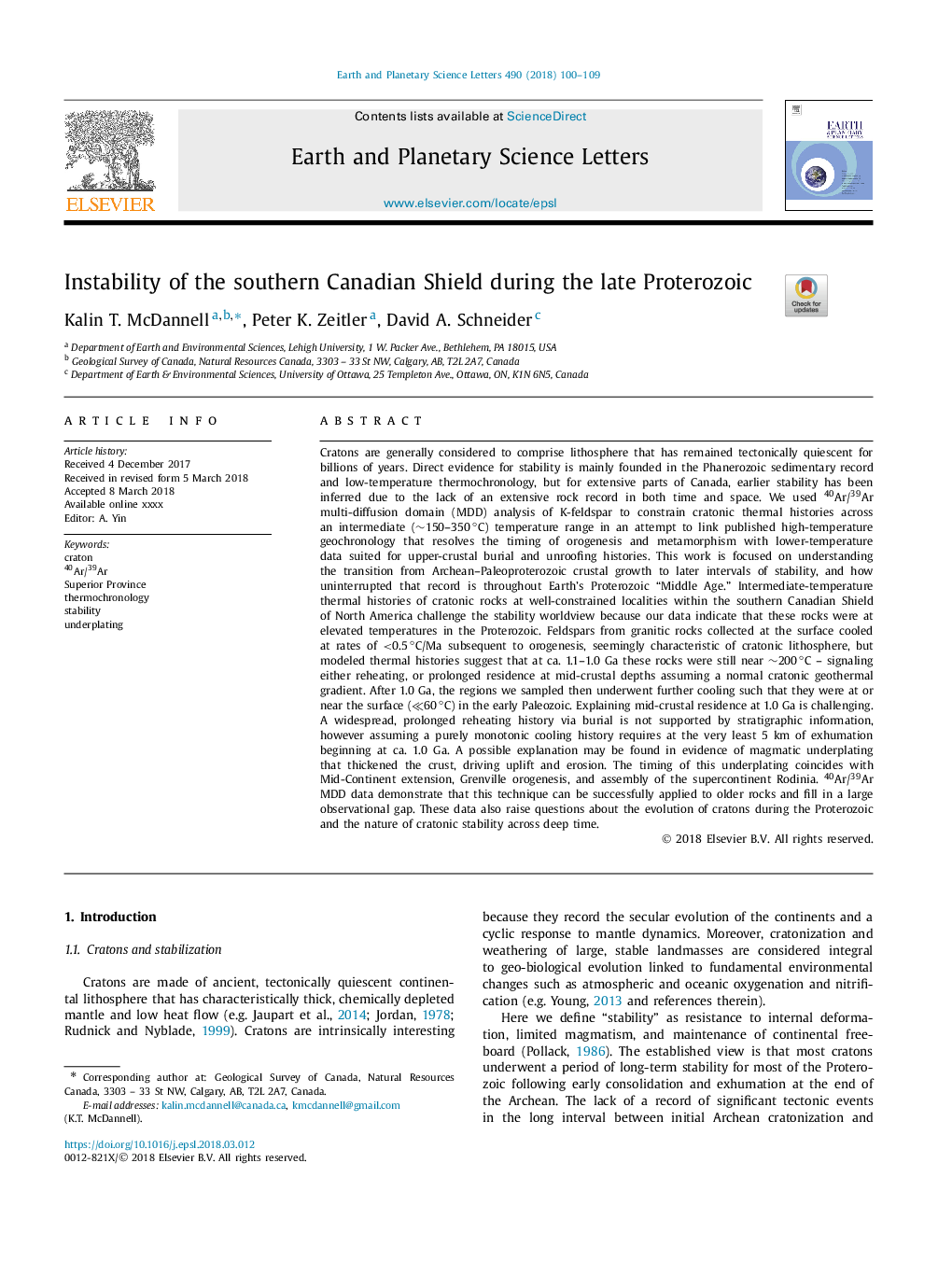| کد مقاله | کد نشریه | سال انتشار | مقاله انگلیسی | نسخه تمام متن |
|---|---|---|---|---|
| 8906978 | 1634666 | 2018 | 10 صفحه PDF | دانلود رایگان |
عنوان انگلیسی مقاله ISI
Instability of the southern Canadian Shield during the late Proterozoic
ترجمه فارسی عنوان
بی ثباتی سپر جنوب کانادا در اواخر پروتروزیو
دانلود مقاله + سفارش ترجمه
دانلود مقاله ISI انگلیسی
رایگان برای ایرانیان
کلمات کلیدی
موضوعات مرتبط
مهندسی و علوم پایه
علوم زمین و سیارات
علوم زمین و سیاره ای (عمومی)
چکیده انگلیسی
Cratons are generally considered to comprise lithosphere that has remained tectonically quiescent for billions of years. Direct evidence for stability is mainly founded in the Phanerozoic sedimentary record and low-temperature thermochronology, but for extensive parts of Canada, earlier stability has been inferred due to the lack of an extensive rock record in both time and space. We used 40Ar/39Ar multi-diffusion domain (MDD) analysis of K-feldspar to constrain cratonic thermal histories across an intermediate (â¼150-350â°C) temperature range in an attempt to link published high-temperature geochronology that resolves the timing of orogenesis and metamorphism with lower-temperature data suited for upper-crustal burial and unroofing histories. This work is focused on understanding the transition from Archean-Paleoproterozoic crustal growth to later intervals of stability, and how uninterrupted that record is throughout Earth's Proterozoic “Middle Age.” Intermediate-temperature thermal histories of cratonic rocks at well-constrained localities within the southern Canadian Shield of North America challenge the stability worldview because our data indicate that these rocks were at elevated temperatures in the Proterozoic. Feldspars from granitic rocks collected at the surface cooled at rates of <0.5â°C/Ma subsequent to orogenesis, seemingly characteristic of cratonic lithosphere, but modeled thermal histories suggest that at ca. 1.1-1.0 Ga these rocks were still near â¼200â°C - signaling either reheating, or prolonged residence at mid-crustal depths assuming a normal cratonic geothermal gradient. After 1.0 Ga, the regions we sampled then underwent further cooling such that they were at or near the surface (âª60â°C) in the early Paleozoic. Explaining mid-crustal residence at 1.0 Ga is challenging. A widespread, prolonged reheating history via burial is not supported by stratigraphic information, however assuming a purely monotonic cooling history requires at the very least 5 km of exhumation beginning at ca. 1.0 Ga. A possible explanation may be found in evidence of magmatic underplating that thickened the crust, driving uplift and erosion. The timing of this underplating coincides with Mid-Continent extension, Grenville orogenesis, and assembly of the supercontinent Rodinia. 40Ar/39Ar MDD data demonstrate that this technique can be successfully applied to older rocks and fill in a large observational gap. These data also raise questions about the evolution of cratons during the Proterozoic and the nature of cratonic stability across deep time.
ناشر
Database: Elsevier - ScienceDirect (ساینس دایرکت)
Journal: Earth and Planetary Science Letters - Volume 490, 15 May 2018, Pages 100-109
Journal: Earth and Planetary Science Letters - Volume 490, 15 May 2018, Pages 100-109
نویسندگان
Kalin T. McDannell, Peter K. Zeitler, David A. Schneider,
